 abc
abc
A (very) short introduction to SPSS and Excel
1) Using SPSS to store datasets..
SPSS (Statistical Package for the Social Sciences) is a powerful and versatile 'number crunching' programme. Once mastered, you will find this an invaluable tool when dealing with large sets of data.
However,be warned, the programme assumes that you know what you want to do. The most common problem students encounter is that they put data in and get an output without really understanding what that output is saying. They have no way of deciding whether the output is correct or not. You should check with the signpost page to decide which test(s) are most appropriate for your objectives.
Check with the glossary if you need a definition of a term you come across.
Here are the first two opening windows..

Make sure you click on variable view to start with...
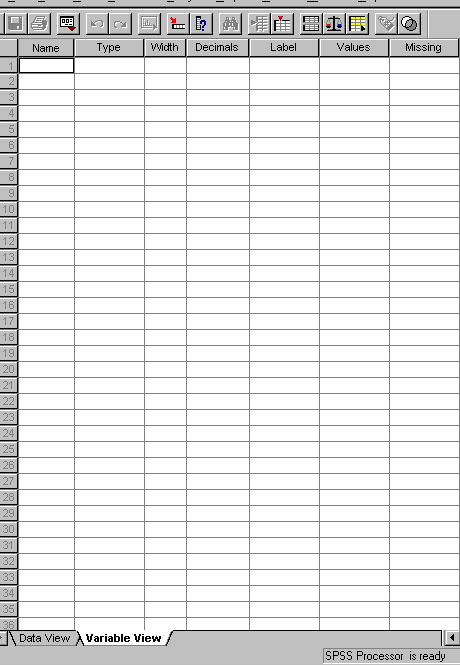
Much now depends upon what type of data you need to enter but the three most important items are 'name', 'label' and 'values'.
Note that when you enter 'name', you are dealing variable at a time and when you have completed this input switch to 'Data View'.
Each of your 'names' will be displayed horizontally and not vertically as in the Variable View. Suppose we entered two variables: 'Temp' and pH... this is how they will appear in Data View and now you are ready to enter your data.

As we go through each test, the precise 'follow on' from the point now reached will be explained. There are three drop down menus that are going to be essential to you... Analyse, Graphs and Transform. Usually, your first call will be to Descriptive Statistics, Descriptives.
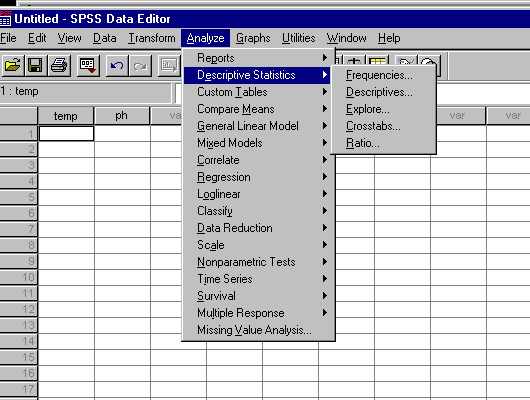
Let us enter a little data to see how this works...
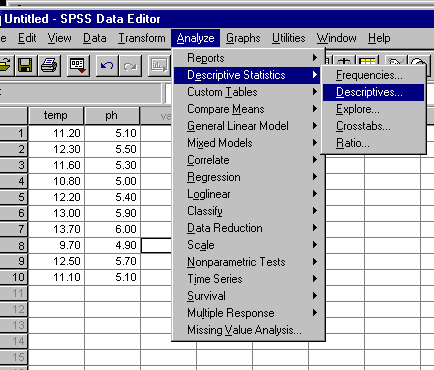
Now the fundamental SPSS window will open and prompt you to transfer one variable over to the variables box..
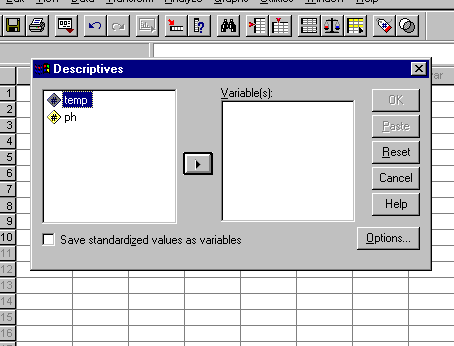
Once you press OK, the computation will begin and the output is generated....
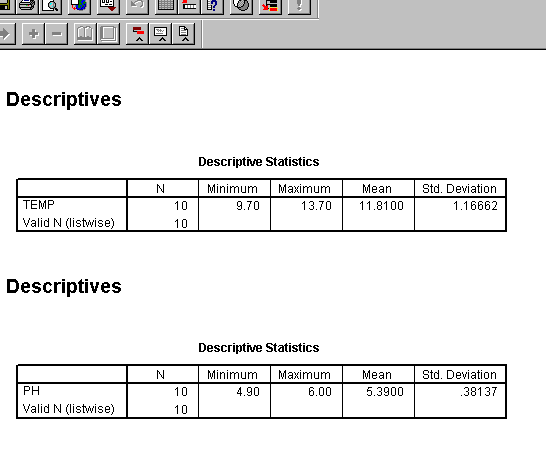
(Note that here we have followed the procedure twice in order to show both outputs)
One other quick operation which is often helpful in visualising what your data is doing is to go to Graphs, Scatter, Simple.
Insert the variables onto the x and y axis and click OK..
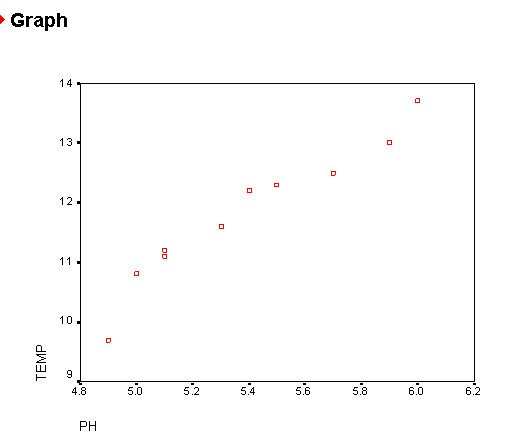
So now you are ready to use SPSS for yourself.
All of the datasets used are available in active form by opening the SPSS data set index>>>
2) Using Excel to store datasets
Excel will already be familiar to most of you and so this piece is simply for those who have not come into contact with this software.
When you open the programme a simple spreadsheet appears...
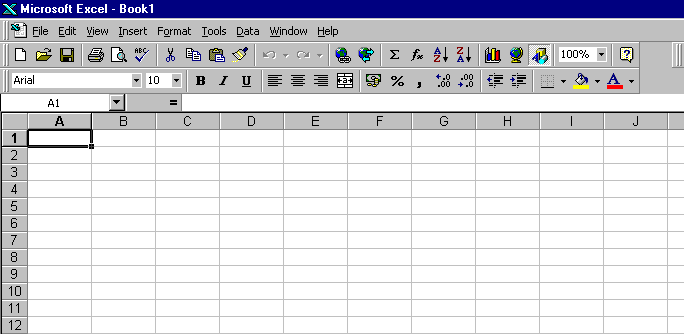
Enter the data as normal in two columns.
We can still find the mean and standard deviation just as in SPSS but it is a little less straightforward. Click open an empty cell where you would like the answer to appear. Go to fx and open the drop down menu, select 'Statistics', Average...
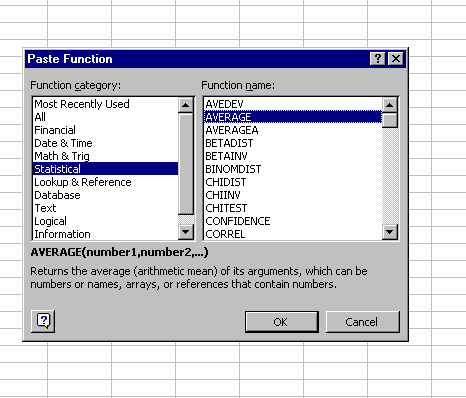
Each column will have to be done separately and again for the Standard deviation.
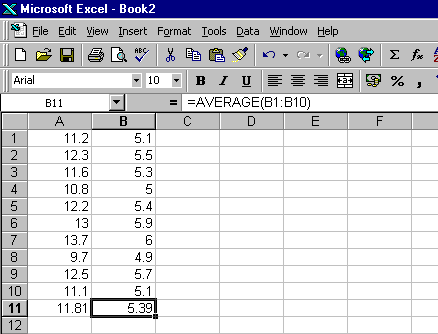
Graphs in Excel are easy to manipulate and can be easily inserted in other documents.
Go to the
Graph icon on the menu bar ![]() and the graph Wizard will open
and the graph Wizard will open
Choose 'Scatter' and simply follow the on screen instuctions regarding titles,gridlines etc. Keep modifying your choices until you are satisfied.
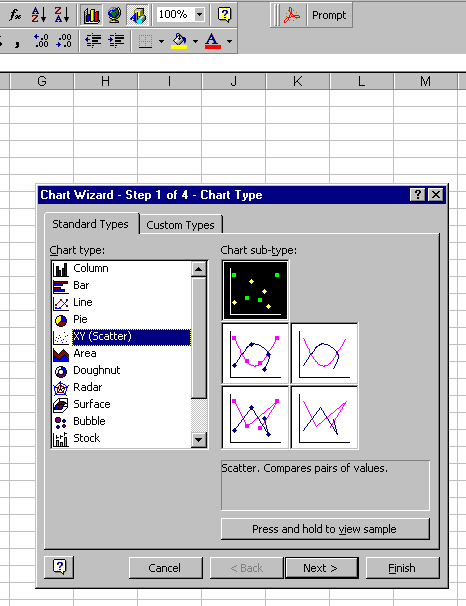
Save the output as a separate chart....
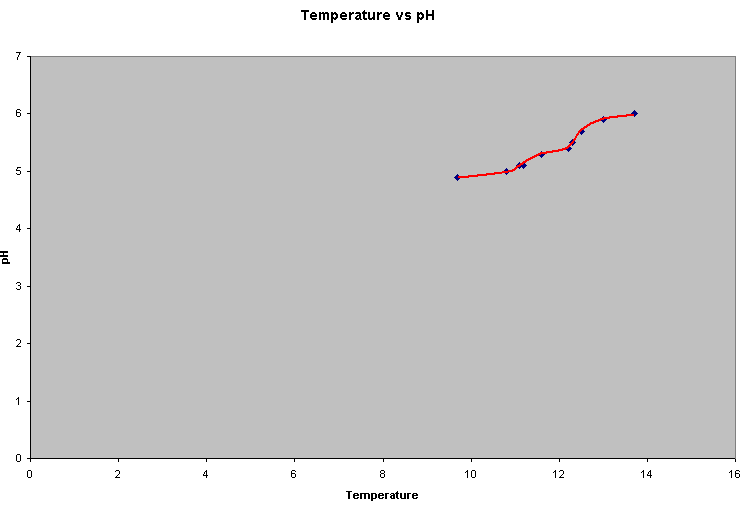
'Chart options' allows further modifications such as the insertion of lines etc as shown above.
Q. Compare the two graphs produced by the two programmes; what do you feel are the advantages and disadvantages of both?